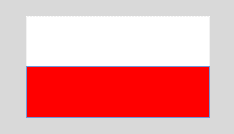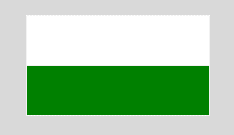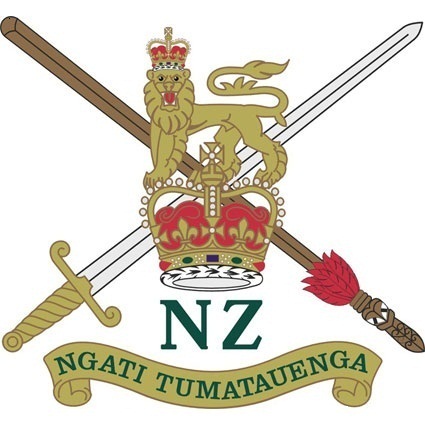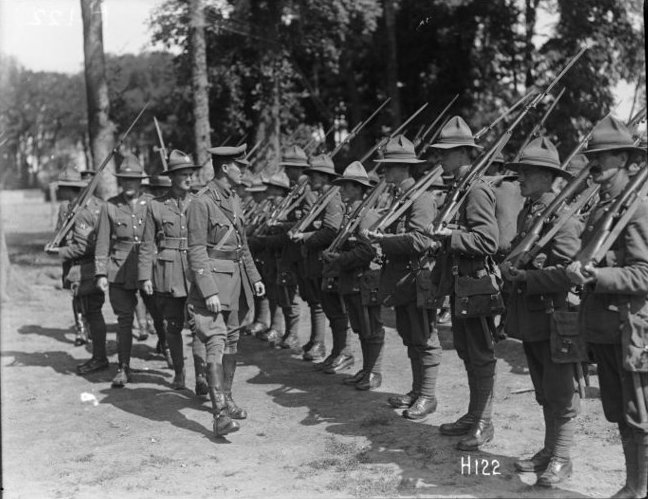|
Battle Of Thermopylae (1941)
The Battle of Thermopylae, on 24–25 April 1941, was part of the German invasion of Greece during World War II. Background Following the retreat of Allied forces from the mountain passes at Olympus and Servia, British Commonwealth forces began to set up defensive positions at the coastal pass at Thermopylae, famous for the Battle of Thermopylae in 480 BC. The New Zealand Army's 2nd Infantry Division under Lieutenant-General Bernard Freyberg was given the task of defending the pass, while elements of the Australian 6th Infantry Division, under Major General Iven Mackay, defended the village of Brallos. In the New Zealand sector, the 5th Brigade was deployed in the foothills along the coastal road south of Lamia near the Spercheios River, covering the bridges on the road to Larisa. The 4th Brigade was positioned on the right flank, where it had established coast-watching patrols. The 6th Brigade was in reserve. The Australian force defending Brallos was comprised predominan ... [...More Info...] [...Related Items...] OR: [Wikipedia] [Google] [Baidu] |
Battle Of Greece
The German invasion of Greece, also known as the Battle of Greece or Operation Marita ( de , Unternehmen Marita, links = no), was the attack of Kingdom of Greece, Greece by Fascist Italy (1922–1943), Italy and Nazi Germany, Germany during World War II. The Italian invasion in October 1940, which is usually known as the Greco-Italian War, was followed by the German invasion in April 1941. Battle of Crete, German landings on the island of Crete (May 1941) came after Allied forces had been defeated in mainland Greece. These battles were part of the greater Balkans campaign (World War II), Balkans Campaign of the Axis powers and their associates. Following the Italian invasion on 28 October 1940, Greece, with British air and material support, repelled the initial Italian attack and a counter-attack in March 1941. When the German invasion, known as Operation Marita, began on 6 April, the bulk of the Hellenic army, Greek Army was on the Greek border with Albania under Italy, Albani ... [...More Info...] [...Related Items...] OR: [Wikipedia] [Google] [Baidu] |
Iven Giffard Mackay
Lieutenant General Sir Iven Giffard Mackay, (7 April 1882 – 30 September 1966) was a senior Australian Army officer who served in both world wars. Mackay graduated from the University of Sydney in 1904 and taught physics there from 1910 until 1914, when he joined the Australian Imperial Force shortly after the outbreak of the First World War. He served with the 4th Infantry Battalion at Gallipoli, where he distinguished himself in hand-to-hand fighting at the Battle of Lone Pine. In April 1916, he assumed command of the 4th Infantry Battalion on the Western Front and led it at the Battle of Pozières, Battle of Bullecourt and Battle of Broodseinde. He was promoted to brigadier general in June 1918, and led the 1st Infantry Brigade at the Battle of Hazebrouck, the Battle of Amiens and in the attack on the Hindenburg Line. After the war, Mackay studied physics at the University of Cambridge under Ernest Rutherford before returning to Australia and his old job ... [...More Info...] [...Related Items...] OR: [Wikipedia] [Google] [Baidu] |
Salamis Island
Salamis ( ; el, Σαλαμίνα, Salamína; grc, label= Ancient and Katharevousa, Σαλαμίς, Salamís) is the largest Greek island in the Saronic Gulf, about off-coast from Piraeus and about west of central Athens. The chief city, Salamina, lies in the west-facing core of the crescent on Salamis Bay, which opens into the Saronic Gulf. On the eastern side of the island is its main port, Paloukia, in size second in Greece only to the port of Piraeus. Name The traditional etymology of Salamis derives it from the eponymous nymph Salamis, the mother of Cychreus, the legendary first king of the island. A more modern theory considers "Salamis" to come from the root ''sal'' 'salt' and ''-amis'' 'middle'; thus ''Salamis'' would be the place amid salt water. Other fringe theories have attempted to connect the name to the Semitic root Š-L-M 'health, safety, peace', because of the well-sheltered harbor, but have been for the most part rejected by the academic community. Fro ... [...More Info...] [...Related Items...] OR: [Wikipedia] [Google] [Baidu] |
2/11th Australian Infantry Battalion
The 2/11th Battalion was an infantry battalion of the Australian Army which saw service during World War II. Raised shortly after the outbreak of war in 1939, the 2/11th was formed from Second Australian Imperial Force volunteers who were recruited mainly from the state of Western Australia. Assigned to the 6th Division, the 2/11th completed its training in Western Australia and New South Wales before deploying to the Middle East in 1940. Its first action came around Bardia in early January 1941, and this was followed by further actions in Libya, and then Greece and on Crete during which the 2/11th suffered heavy losses. After being re-formed, in late 1941 the battalion was deployed to Syria to undertake garrison duties there. In early 1942, it was brought back to Australia to help bolster the country's defences following Japanese advances in the Pacific, and it subsequently undertook defensive duties in Western Australia. The 2/11th did not see combat again until the final yea ... [...More Info...] [...Related Items...] OR: [Wikipedia] [Google] [Baidu] |
2/5th Australian Infantry Battalion
The 2/5th Battalion was an infantry battalion of the Australian Army that operated during World War II. It was raised at Melbourne, Victoria, on 18 October 1939 as part of the Second Australian Imperial Force (2nd AIF), attached to the 17th Brigade of the 6th Division. The 2/5th was one of only two Australian infantry battalions to fight against all of the major Axis powers during the war, seeing action against the Germans and Italians in Egypt, Libya, Greece and Crete, and the Vichy French in Syria, before returning to Australia in 1942 to fight the Japanese following a period of garrison duties in Ceylon, where it formed part of an Australian force established to defend against a possible Japanese invasion. Following its return to Australia, the battalion was re-organised for jungle warfare and took part in two campaigns in New Guinea. The first of these campaigns came in 1942–1943 when it was involved in the defence of Wau and the Salamaua–Lae campaign, and then aga ... [...More Info...] [...Related Items...] OR: [Wikipedia] [Google] [Baidu] |
2/1st Australian Infantry Battalion
The 2/1st Battalion was an infantry battalion of the Australian Army. Formed as part of the Second Australian Imperial Force at the start of World War II, the battalion was deployed to the Middle East in early 1940 and subsequently took part in the early fighting in the North African campaign, taking part in battles around Bardia and Tobruk before later being sent to Greece in early 1941. A lightning German advance quickly pushed the Allies back and forced them to evacuate after a very short campaign and the 2/1st was landed on Crete where they subsequently fought unsuccessfully to repel a German invasion in May. The majority of the battalion was captured on Crete, but the 2/1st was subsequently re-built from survivors in Palestine and returned to Australia in early 1942 following Japan's entry into the war. They then fought two campaigns against the Japanese in New Guinea, fighting in the Kokoda Track campaign during 1942–43 and the Aitape–Wewak campaign in 1944–45. Fo ... [...More Info...] [...Related Items...] OR: [Wikipedia] [Google] [Baidu] |
2/8th Australian Infantry Battalion
The 2/8th Battalion was an infantry battalion of the Australian Army that served during World War II. Raised as part of the Second Australian Imperial Force at Melbourne, Victoria on 30 October 1939, the 2/8th was initially attached to the 17th Brigade, 6th Division. It was later transferred to the 19th Brigade and with this formation the battalion saw action in Egypt, Libya, Greece and Crete before returning to Australia. A period of garrison duty in Darwin followed in 1942–1943, after which the battalion concentrated with other 6th Division units on the Atherton Tablelands, remaining there throughout 1943–1944. In late 1944, the battalion was sent to New Guinea to fight the Japanese as part of the Aitape–Wewak campaign. The battalion was disbanded at Puckapunyal on 14 December 1945. History Formation The 2/8th Battalion was established at the Royal Melbourne Showgrounds in the period shortly after Australia declared war on Germany. Its official date of rais ... [...More Info...] [...Related Items...] OR: [Wikipedia] [Google] [Baidu] |
2/4th Australian Infantry Battalion
The 2/4th Battalion was an infantry battalion of the Australian Army that was raised for service during World War II, as part of the Second Australian Imperial Force. Deploying to the Middle East in early 1940, the battalion took part in the early fighting in North African campaign, North Africa in early 1941 along with the rest of the 6th Division (Australia), 6th Division, before being sent to Battle of Greece, Greece and then Battle of Crete, Crete, where it was heavily engaged and suffered heavy losses. Rebuilt in Mandatory Palestine, Palestine, the battalion undertook occupation duties in Mandate for Syria and the Lebanon, Syria. In early 1942, the 2/4th returned to Australia in response to Japan's entry into the war, and subsequently undertook a long period of defensive duties and training in Darwin, and then in north Queensland. While other elements of the 6th Division saw action in New Guinea campaign, New Guinea in 1942–1943, the 2/4th saw no combat again until late ... [...More Info...] [...Related Items...] OR: [Wikipedia] [Google] [Baidu] |
19th Brigade (Australia)
The 19th Brigade was a formation of the Australian Army that was raised as part of the Second Australian Imperial Force for service during World War II. It was briefly raised in 1912 as a Militia formation providing training as part of the compulsory training scheme. Later, during World War II, the brigade was established in April 1940 in Palestine as a triangular formation, the brigade was created by transferring one infantry battalion from three other brigades. It was subsequently assigned to the 6th Division. Throughout 1941, the brigade fought in North Africa, Greece and on Crete, before undertaking garrison duties in Syria, remaining there until January 1942. Following the Japanese entry into the war, the 19th Brigade was withdrawn to Australia and subsequently undertook garrison duties in Darwin. It did not see combat again until late in the war, when it was committed to the Aitape–Wewak campaign in 1944–1945. The brigade was disbanded in December 1945 in Puckapunyal. ... [...More Info...] [...Related Items...] OR: [Wikipedia] [Google] [Baidu] |
6th Infantry Brigade (New Zealand)
The 6th Infantry Brigade was an infantry brigade of the New Zealand Military Forces, active during World War II as part of the 2nd New Zealand Division. It saw service during the North African Campaign and the Italian Campaign before being disbanded in late 1945. History The 6th Infantry Brigade was intended to be the last of the three echelons of the 2nd New Zealand Division, commanded by Major General Bernard Freyberg. The first two echelons had already departed New Zealand for the Middle East when the 6th Infantry Brigade was formed in May 1940. However, the officers and non-commissioned officers of the brigade had received their training with the 5th Infantry Brigade, the second echelon of the division. Brigadier Harold Barrowclough, who was then in England where the second echelon had been diverted while in transit, was appointed commander of the brigade. The 6th Brigade consisted of three infantry battalions, these being the 24th (with men drawn from the Northern Milita ... [...More Info...] [...Related Items...] OR: [Wikipedia] [Google] [Baidu] |
4th Infantry Brigade (New Zealand)
The 4th Infantry Brigade was a formation of the New Zealand Military Forces, active in both the First and Second World Wars. It was initially raised in England in 1917 for service with the New Zealand Division on the Western Front during the First World War. It only fought in one major engagement, the Battle of Broodseinde, although it was in reserve for two other significant battles, the Battle of Messines and the First Battle of Passchendaele. The brigade was disbanded in early 1918 due to a reorganisation of the New Zealand Division. The brigade was resurrected for service in the Second World War as part of the 2nd New Zealand Division. It saw service during the Battle of Greece, the Battle of Crete and the North African campaign before being converted into the 4th New Zealand Armoured Brigade. First World War Formation The 4th Infantry Brigade was formed in response to a request made by the British War Office in February 1917 for a second New Zealand division, or faili ... [...More Info...] [...Related Items...] OR: [Wikipedia] [Google] [Baidu] |
Spercheios River
The Spercheios (, ''Sperkheiós''), also known as the Spercheus from its Latin name, is a river in Phthiotis in central Greece. It is long, and its drainage area is . It was worshipped as a god in the ancient Greek religion and appears in some collections of Greek mythology. In antiquity, its upper valley was known as Ainis. In AD 997, its valley was the site of the Battle of Spercheios, which ended Bulgarian incursions into the Byzantine Empire. It is referenced in a surviving fragment of Aeschylus' play ''Philoctetes'', quoted in ''The Frogs'', as a place for cattle. River The river begins in the Tymfristos mountains on the border with Evrytania and flows to the east through the village Agios Georgios Tymfristou, entering a wide plain. It flows along the towns Makrakomi and Leianokladi, and south of the Phthiotidan capital Lamia. The river flows through an area of former wetlands, that have been reclaimed for agriculture. It empties into the Malian Gulf of the Aegean ... [...More Info...] [...Related Items...] OR: [Wikipedia] [Google] [Baidu] |









